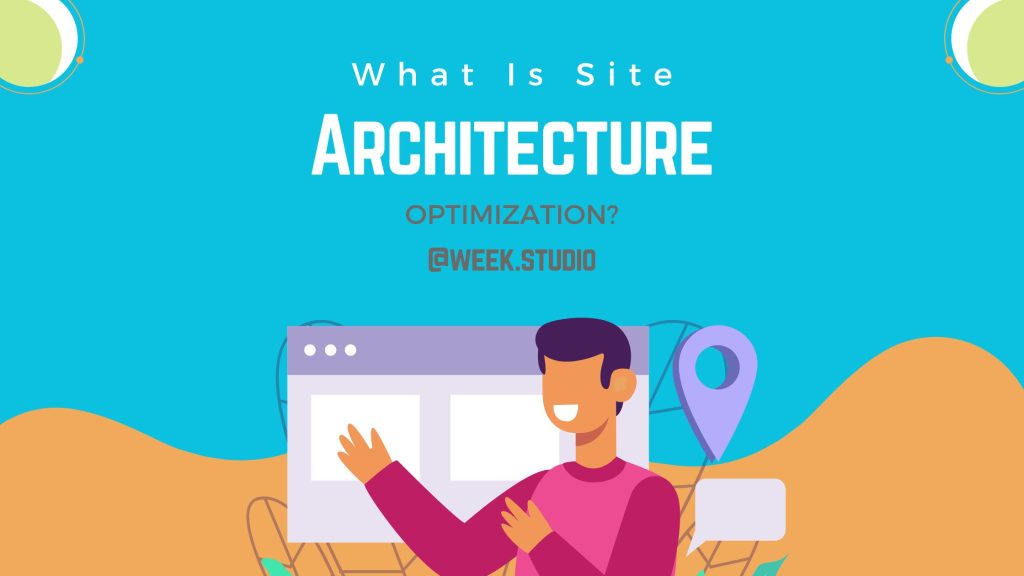In the vast realm of digital dominance, where online visibility reigns supreme, the concept of Site Architecture Optimization emerges as a guiding light for businesses seeking to carve their niche in the virtual space. As the digital landscape continues to evolve, the significance of a well-structured and optimized website cannot be overstated. This article delves into the intricacies of Site Architecture Optimization, unraveling its importance, and exploring its direct correlation with Search Engine Optimization (SEO) strategies, ultimately paving the way for unparalleled digital success.
In an era where online presence serves as the cornerstone of a brand’s identity, the architecture of a website becomes the digital blueprint. It not only dictates the aesthetics but plays a pivotal role in determining how search engines perceive and rank the site. Join me on this journey as we navigate through the fundamental aspects of Site Architecture Optimization, understanding its nuances and unlocking the keys to a robust digital framework. Let’s embark on a quest to harness the power of optimized site architecture for a triumphant online presence.
The Site Architecture
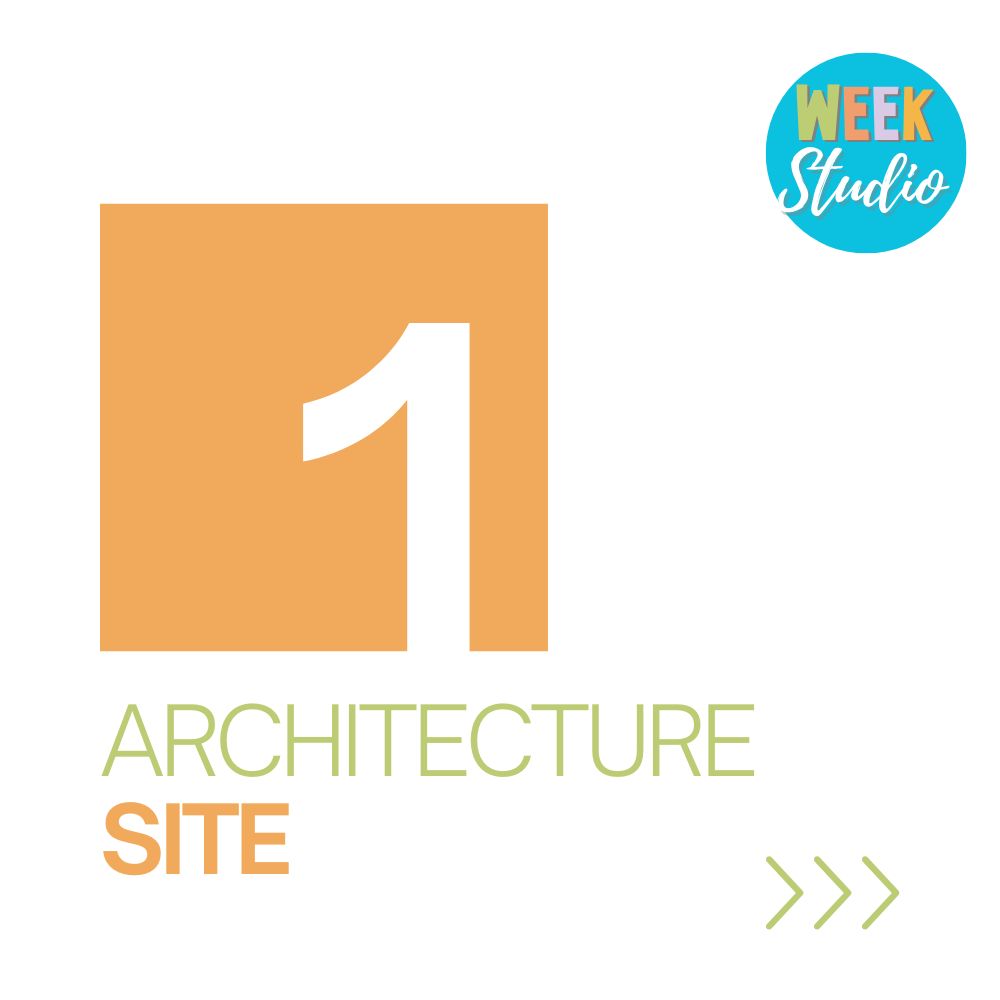
To embark on the path of Site Architecture Optimization, it is imperative to grasp the essence of site architecture itself. In the digital realm, site architecture encompasses the structural framework and organization of a website, determining how content, pages, and elements are interconnected. Picture it as the infrastructure of a city – a well-planned architecture ensures smooth navigation, accessibility, and an overall positive experience for both users and search engines.
Defining Site Architecture
At its core, site architecture refers to the way web pages are structured and linked within a website. It involves the arrangement of content, URLs, and navigation to create a logical hierarchy. A well-defined site architecture is akin to a well-organized library where books are categorized, shelves are labeled, and visitors can effortlessly find what they seek.
Components and Elements
Site architecture comprises several key components and elements, each playing a unique role in shaping the digital landscape. From URLs and navigation menus to header tags and internal links, every facet contributes to the overall structure. Let’s briefly explore these elements:
- URL Structure: The uniform resource locator (URL) is more than just a web address. A clear and concise URL structure not only aids in SEO but also enhances user understanding of a page’s content.
- Navigation Design: The menu and navigation structure determine how users move through the website. An intuitive navigation design improves user experience and facilitates seamless exploration.
- Header Tags (H1, H2, H3, and H4): These tags serve as signposts for search engines and readers, indicating the hierarchy and importance of content. They contribute to the overall readability and SEO of the page.
Understanding these foundational components lays the groundwork for effective Site Architecture Optimization. The next sections will delve into the pivotal role of site structure in SEO and the key elements that constitute a well-optimized architecture. Let’s unravel the intricate web of site architecture and discover its profound impact on the digital landscape.
The Role of Site Structure in SEO
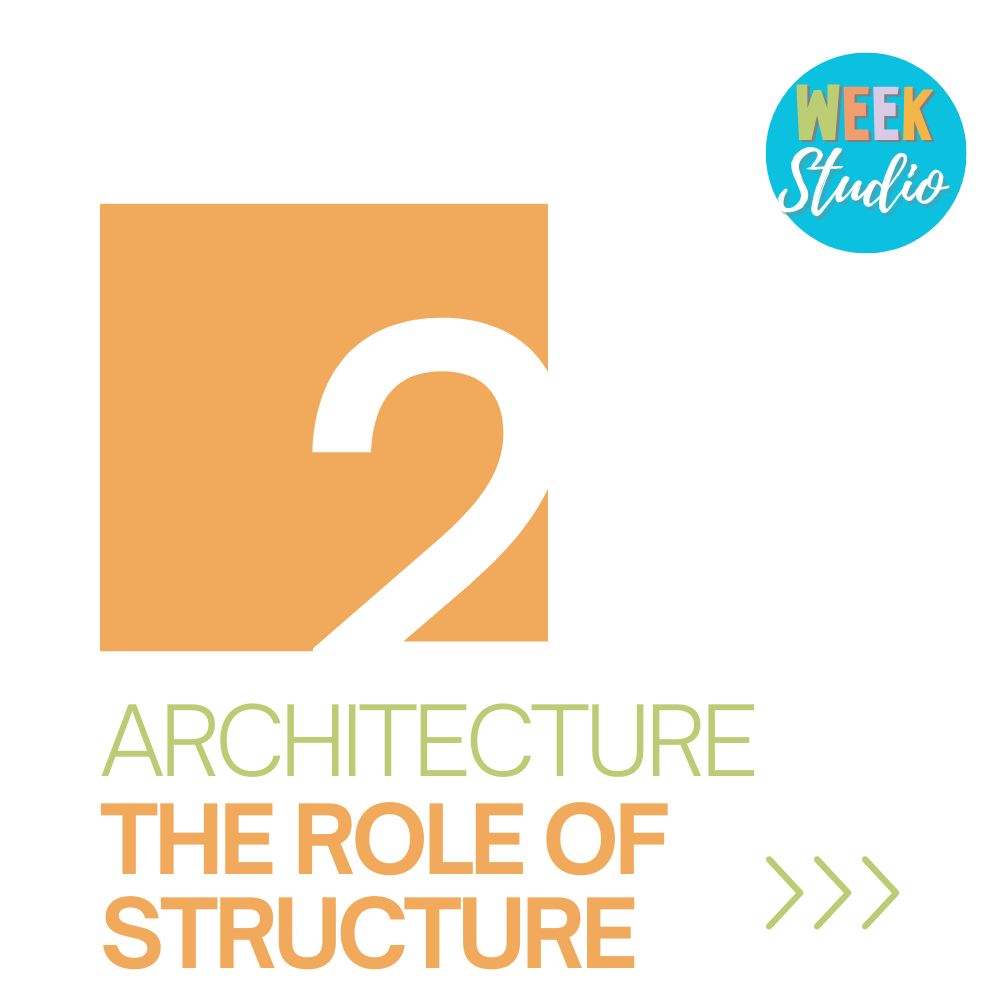
As we delve deeper into the realm of Site Architecture Optimization, it becomes evident that the structure of a website plays a pivotal role in determining its success in the ever-competitive world of Search Engine Optimization (SEO). The way a site is organized not only influences user experience but is also a critical factor considered by search engines when ranking pages. Let’s explore the symbiotic relationship between site structure and SEO and understand why it’s the backbone of digital visibility.
How Site Structure Impacts Search Engine Rankings
Search engines, the gatekeepers of online information, employ complex algorithms to index and rank websites. A well-organized site structure provides search engines with a clear map, making it easier for them to crawl and understand the content. This, in turn, positively influences the website’s visibility in search engine results pages (SERPs).
Imagine search engines as digital tourists exploring a city. A well-structured website is akin to a city with well-labeled streets and organized districts. Search engine bots can efficiently navigate through the pages, indexing content and ranking the site higher for relevant queries.
Well-Organized and User-Friendly Website
User experience is paramount in the digital landscape, and search engines recognize the significance of providing users with valuable, easily accessible content. A site that is well-organized not only caters to the needs of search engines but also enhances the overall user experience.
A user-friendly website structure ensures that visitors can quickly find the information they seek, leading to lower bounce rates and increased engagement. Search engines, such as Google, take user behavior into account when determining the relevance and quality of a site, further emphasizing the crucial link between site structure and SEO.
In the next section, we will unravel the key elements that contribute to Site Architecture Optimization, focusing on URL structure, navigation design, and the strategic use of header tags. By understanding these elements, we can unlock the potential for a website to not only be user-friendly but also search engine-friendly, paving the way for enhanced digital visibility. Let’s navigate the intricate terrain where site structure and SEO converge, shaping the destiny of online presence.
Key Elements of Site Architecture Optimization

In the quest for an optimized website that stands out in the digital landscape, understanding and implementing key elements of Site Architecture Optimization is paramount. These elements form the building blocks of a well-structured website, influencing both user experience and search engine rankings. Let’s unravel the crucial components that contribute to the optimization of site architecture.
URL Structure and its Significance
The URL, or Uniform Resource Locator, is more than just an address for a web page. A concise and descriptive URL not only enhances user understanding but also contributes to SEO. Consider the following examples:
Non-Optimized URL:
https://www.example.com/?p=123Optimized URL:
https://www.example.com/optimizing-site-architectureAn optimized URL provides a clear indication of the page’s content, making it more likely to be clicked by users and better understood by search engines.
Navigation Design for User Experience and SEO Benefits
An intuitive and well-organized navigation design ensures that visitors can effortlessly find what they’re looking for. From a SEO perspective, effective navigation facilitates the crawling and indexing process for search engines.
Implementing a logical hierarchy in menus and navigation menus not only improves user experience but also helps search engines understand the relationships between different pages. This, in turn, contributes to a more coherent and indexable website structure.
Proper Use of Header Tags (H1, H2, H3, and H4) for Content Hierarchy
Header tags, ranging from H1 to H4, play a crucial role in structuring content and signaling its importance. These tags create a hierarchy within the content, making it easier for both readers and search engines to understand the organization of information.
- H1 (Heading 1): The main heading of the page, often the title.
- H2 (Heading 2): Subheadings that divide the content into sections.
- H3 (Heading 3): Subsections within H2 sections.
- H4 (Heading 4): Further subcategories, providing granularity to the hierarchy.
Strategically using header tags not only improves readability but also enhances the SEO value of the content. In the upcoming sections, we will explore additional facets of Site Architecture Optimization, including mobile responsiveness, speed and performance optimization, and techniques for efficient crawling and indexing. Join me on this journey as we unravel the intricate tapestry of elements that transform a website into a seamlessly optimized digital entity.
Mobile Responsiveness and Site Architecture
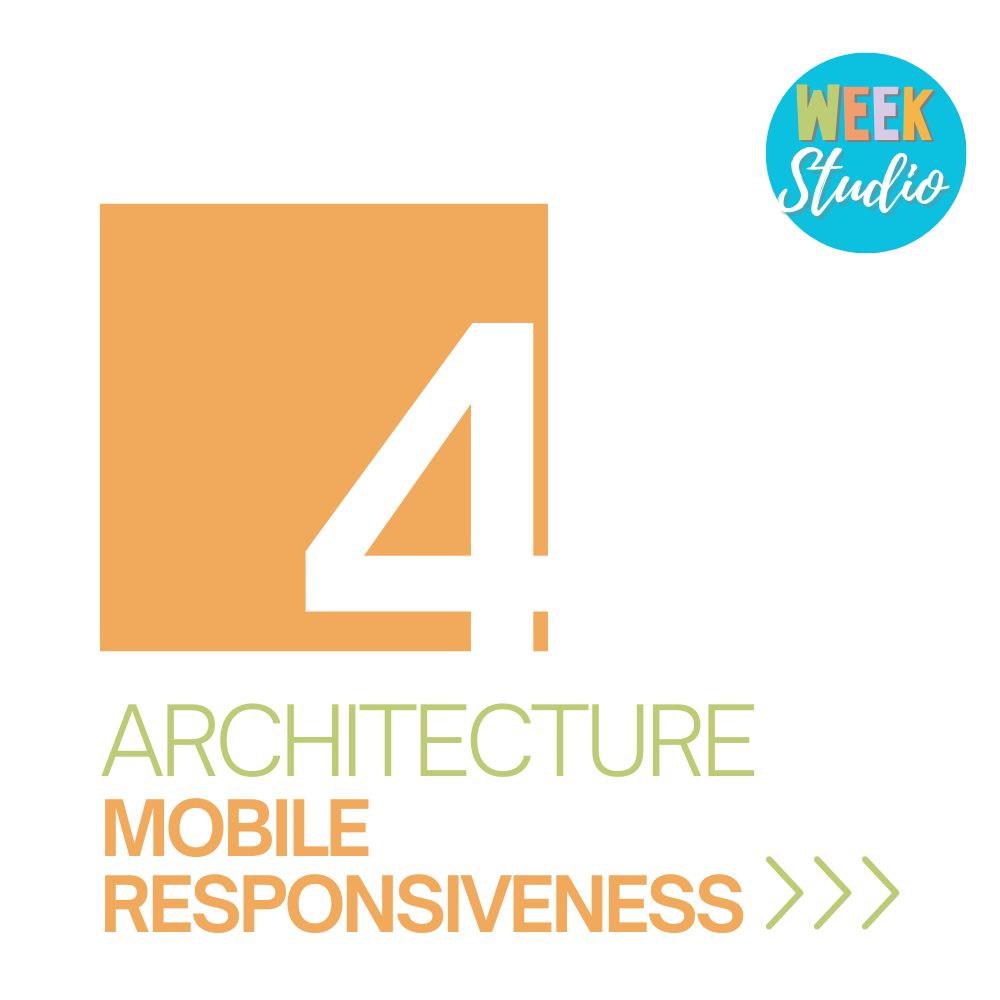
In an era where mobile devices have become the primary gateway to the digital world, the importance of mobile responsiveness in Site Architecture Optimization cannot be overstated. The seamless transition from desktop to mobile browsing has redefined user expectations, making it imperative for websites to adapt. Let’s explore the impact of mobile-friendliness on site architecture and uncover techniques for optimizing the structure to cater to the ever-growing mobile audience.
The Impact of Mobile-Friendliness on Site Architecture
With the proliferation of smartphones and tablets, a significant portion of online activities occurs on mobile devices. Search engines, recognizing this shift in user behavior, have adapted their algorithms to prioritize mobile-friendly websites. The mobile-friendliness of a site is not only a ranking factor but also a crucial aspect of providing an optimal user experience.
A website that is responsive to different screen sizes and devices ensures that users can access content seamlessly, regardless of whether they are using a desktop computer, a tablet, or a smartphone. This adaptability is not only user-centric but aligns with the preferences of search engines, contributing to improved rankings in mobile search results.
Techniques for Optimizing Site Structure for Mobile Users
- Responsive Design: Implement a responsive web design that adjusts the layout and elements of the site based on the screen size.
- Mobile-Friendly Navigation: Simplify navigation for mobile users by using clear menus, easy-to-tap buttons, and a straightforward menu structure. Consider the limited screen space and prioritize essential elements.
- Optimized Content for Mobile Consumption: Tailor content for mobile users by keeping it concise, using legible fonts, and optimizing images for faster loading. Mobile users often have different needs and preferences, and catering to these aspects enhances their experience.
- Mobile Page Speed Optimization: Page loading speed is crucial for mobile users. Optimize images, minimize server requests, and leverage browser caching to ensure swift loading times, contributing to a positive user experience and SEO.
As we navigate through the evolving landscape of Site Architecture Optimization, the emphasis on mobile responsiveness underscores the dynamic nature of digital user engagement. The next segment will unravel the intricacies of speed and performance optimization, shedding light on how a swift and efficient website contributes not only to user satisfaction but also to enhanced search engine rankings. Join me in exploring the need for speed in the digital domain.
Speed and Performance Optimization

In the fast-paced digital ecosystem, where attention spans are fleeting, the speed and performance of a website stand as crucial factors influencing user satisfaction and search engine rankings. Speed is not just a luxury but a necessity, shaping the user experience and determining the success of Site Architecture Optimization efforts. Let’s delve into the intricacies of speed and performance optimization and uncover strategies to ensure your website is not left lagging in the digital race.
Loading Speed’s Influence on User Experience and SEO
Imagine entering a store where the doors creak open at a snail’s pace, and the aisles seem endless. Frustrating, isn’t it? The same principle applies to websites. Users expect instantaneous access to information, and a slow-loading website can drive them away, leading to higher bounce rates and diminished satisfaction.
Websites with sluggish loading times may find themselves lower in search rankings, as search engines aim to deliver results that align with user expectations. Speed is not just a luxury but a criterion for a website’s relevance and success.
Strategies for Optimizing Website Performance
- Image Optimization: Compress and optimize images without compromising quality.
- Browser Caching: Leverage browser caching to store static files on visitors’ devices. This reduces the need to reload resources on subsequent visits, enhancing overall speed.
- Minimize HTTP Requests: Each element on a web page, from images to scripts, requires a separate HTTP request. Minimize these requests by combining files and utilizing techniques like CSS sprites.
- Content Delivery Network (CDN): Utilize a CDN to distribute website content across servers worldwide. This reduces latency and ensures faster loading times, especially for users geographically distant from the hosting server.
- Server Response Time Optimization: Ensure that your hosting server responds swiftly to user requests. Optimize server configurations and consider upgrading hosting plans for improved performance.
By adopting these strategies, you not only enhance the user experience but also align your website with the preferences of search engines, ultimately contributing to improved search rankings. As we navigate the speed lanes of Site Architecture Optimization, the next segment will delve into the crucial aspects of crawling and indexing, shedding light on how search engine bots explore and categorize websites. Join me in uncovering the secrets to efficient navigation in the digital realm.
Crawling and Indexing

In the intricate dance between websites and search engines, the processes of crawling and indexing play a central role in determining a site’s visibility and relevance. Understanding how search engine bots navigate and categorize your website is key to effective Site Architecture Optimization. Let’s embark on a journey through the virtual pathways of crawling and indexing, unraveling the mechanisms that connect your content with search engine algorithms.
How Search Engine Bots Navigate and Index Websites
Search engine bots, also known as spiders or crawlers, are automated programs designed to traverse the web and collect information from websites. These bots follow links, analyze content, and index pages to make them searchable. The crawling and indexing process unfolds in the following steps:
- Crawling: Bots start by visiting a few known pages and follow links to discover new ones. This process is akin to exploring a web of interconnected streets in a city. Each link is a pathway that the bot follows, allowing it to discover and map out the entire website.
- Indexing: Once a page is crawled, the information is indexed – organized and stored in a database. The index serves as a reference point for search engines, enabling them to quickly retrieve relevant pages in response to user queries.
Best Practices to Enhance Crawling Efficiency
- XML sitemap: It’s easy to create an XML sitemap-File and submit it to search engines. This document acts as a roadmap, guiding crawlers to the most important pages on your site. It provides metadata about each URL, helping search engines understand the structure of your content.
- Robots.txt File: Use a
robots.txtfile to communicate with crawlers and specify which areas of your site should not be crawled. This file serves as a set of instructions, guiding bots through the permissible and restricted zones of your website. - Internal Linking: Implement a solid internal linking strategy. Internal links guide crawlers to different pages within your site, helping them understand the hierarchy and relationship between various pieces of content.
- Fix Broken Links: Broken links can impede crawling and negatively impact user experience. Regularly audit and fix broken links to ensure a smooth navigation experience for both users and bots.
Understanding the nuances of crawling and indexing empowers website owners to optimize their sites for efficient exploration by search engine bots. In the subsequent section, we’ll explore the concept of canonicalization and its role in mitigating duplicate content issues, ensuring that your site’s integrity remains intact in the vast digital landscape. Join me in unraveling the complexities of content consolidation and SEO coherence.
Canonicalization

In the intricate web of digital content, duplicate pages can create confusion for both users and search engines. Canonicalization emerges as a critical aspect of Site Architecture Optimization, offering a solution to streamline content and establish a primary version. Let’s delve into the concept of canonicalization and explore how it helps maintain order and coherence within your website.
Understanding Canonical Tags for Content Consolidation
Canonicalization is the process of selecting the preferred version of a set of similar or duplicate pages. This is achieved through the use of canonical tags, HTML elements that inform search engines about the preferred URL for a given piece of content. The canonical tag helps in consolidating the various versions of a page under a single, authoritative URL.
Consider the following scenario:
- Non-Canonicalized URLs:
https://www.example.com/pagehttps://www.example.com/page?sessionid=123https://www.example.com/page?utm_source=google
In this case, all three URLs might lead to the same content, but search engines may treat them as separate pages, potentially causing issues with duplicate content. Canonicalization allows you to designate one of these URLs as the canonical version, ensuring that search engines recognize it as the primary source.
Avoiding Duplicate Content Issues through Proper Canonicalization
- Identify Canonical Versions: Determine the preferred version of each page. This is often the version that is most representative or accessible to users without unnecessary parameters.
- Implement Canonical Tags: Once you’ve identified the canonical version, add the canonical tag to the
<head>section of your HTML. The tag looks like this:
<link rel="canonical" href="https://www.example.com/canonical-version" />- Consistent Internal Linking: Ensure that internal links point to the canonical version of a page. This helps search engines understand the authoritative URL and prevents the dilution of link equity across multiple variations.
By implementing canonicalization, you not only resolve duplicate content issues but also consolidate the SEO value of various URLs into a single authoritative source. As we navigate the seas of Site Architecture Optimization, the next port of call is internal linking strategies – a powerful tool for enhancing both user experience and SEO. Join me in exploring the art of guiding users and search engines through the interconnected pathways of your website.
Internal Linking Strategies
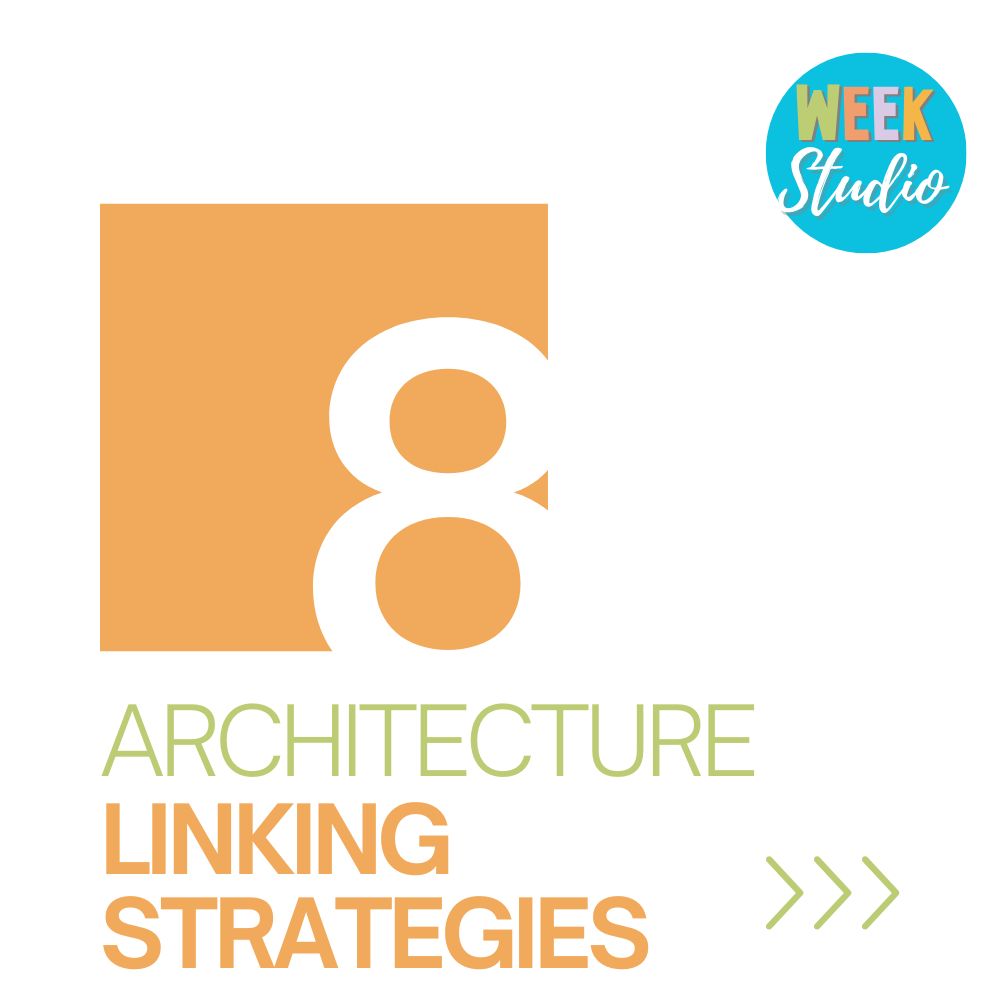
In the vast expanse of the internet, internal linking serves as the digital signposts guiding users and search engines through the labyrinth of your website. Beyond mere navigation, strategic internal linking is a powerful tool for Site Architecture Optimization, influencing both user experience and SEO. Let’s unravel the art of connecting the dots within your content, creating a seamless journey for both humans and search engine bots.
Importance of Internal Linking in Site Architecture
Internal links are the pathways that connect one page of your website to another. These links serve a dual purpose: they aid users in navigating through your content, and they provide search engines with valuable information about the structure and hierarchy of your site. Understanding the significance of internal linking is essential for optimizing the architecture of your website.
- Enhanced User Experience: Internal links facilitate a smooth transition between different pages, allowing users to explore related content effortlessly. A well-structured internal linking system enhances user engagement and encourages prolonged visits to your site.
- SEO Benefits: From an SEO perspective, internal linking distributes link equity across various pages. When you link from one page to another within your site, you pass along some of the SEO value of the source page to the target page. This contributes to the overall authority and visibility of your content.
Effective Ways to Implement Internal Linking for SEO
- Use Descriptive Anchor Text: The clickable text of a link, known as anchor text, should provide context about the content it’s linking to. Descriptive anchor text not only aids users in understanding the linked content but also provides valuable information to search engines.
- Create a Content Hub: Identify cornerstone or pillar content within your site – these are comprehensive, in-depth pages covering core topics. Use internal links to connect related articles or pages to the central hub, establishing a thematic content structure.
- Mindful Link Placement: Place internal links where they naturally fit within the context of the content. Avoid excessive linking, as it can be perceived as spammy. The goal is to guide users to relevant information seamlessly.
- Linking to Important Pages: Prioritize internal links to pages that hold significant value, such as product pages, services, or key informational resources. This helps search engines understand the hierarchy of importance within your site.
As we navigate the intricacies of internal linking, the concept of content silos emerges as a valuable strategy for organizing information thematically. Join me in the next section as we explore the benefits of content silos and how they contribute to a well-structured and optimized site architecture. Let’s continue to build the digital framework that elevates your website in the eyes of both users and search engines.
Content Silos

In the digital landscape, where content is king, the concept of content silos emerges as a strategic approach to organizing information thematically. Content silos play a crucial role in Site Architecture Optimization, creating a structured framework that enhances user experience and SEO. Let’s delve into the world of content silos and explore how they contribute to the mastery of thematic organization within your website.
Creating Thematic Content Silos
A content silo is a method of organizing information on a website by grouping related content into distinct, thematic sections. This organizational approach provides clarity to both users and search engines, making it easier to understand the overarching themes of your content. The benefits of content silos extend to both user experience and SEO.
- Logical Organization: Content silos create a logical and hierarchical structure within your website. Each silo represents a specific theme or topic, and content within that silo is closely related. This logical organization aids users in finding relevant information with minimal effort.
- Internal Linking Opportunities: Silos naturally lend themselves to internal linking. As content within a silo is thematically connected, internal links between pages within the same silo strengthen the topical relevance and coherence, contributing to SEO.
- Improved Indexing: Search engines can more efficiently crawl and index content when it is organized into silos. This structure signals the relationship between different pieces of content, helping search engine bots understand the context and relevance of each page.
Benefits of Content Silos for SEO
- Enhanced Relevance: Silos help establish topical relevance for search engines. When content on a particular theme is concentrated within a silo, it signals to search engines that your website is an authoritative source on that subject.
- Keyword Focus: Each silo can be optimized for specific keywords related to its theme. This targeted optimization improves the likelihood of ranking for relevant search queries and reinforces the topical authority of your website.
- Reduced Keyword Cannibalization: Content silos help prevent keyword cannibalization, a situation where multiple pages on a site compete for the same keywords. By assigning specific themes to silos, you reduce the risk of diluting the SEO value of your content.
As we weave through the fabric of Site Architecture Optimization, the next stop is understanding the impact of user engagement on your site’s architecture. Join me in the following section as we explore design strategies that cater to user interaction and contribute to a well-optimized digital environment. Let’s continue crafting a website that not only attracts but captivates its audience.
User Engagement and Site Architecture

In the dynamic realm of digital interaction, user engagement stands as a cornerstone of website success. Site Architecture Optimization goes beyond structural elements; it extends to the design strategies that enhance user interaction. Let’s embark on a journey into the symbiotic relationship between user engagement and site architecture, exploring how thoughtful design can captivate and retain your audience in the digital landscape.
Designing for User Engagement and Interaction
User engagement encompasses the various ways visitors interact with and respond to your website. From the initial landing page to the exploration of content, every interaction shapes the overall user experience. Consider these key strategies for designing a site architecture that fosters meaningful engagement:
- Intuitive Navigation: A well-designed navigation system guides users seamlessly through your website. Clear menus, easily accessible categories, and intuitive pathways contribute to a positive user experience, reducing bounce rates and encouraging exploration.
- Interactive Elements: Incorporate interactive elements that invite user participation. Features like quizzes, polls, and interactive infographics not only engage visitors but also provide valuable insights into user preferences.
- Calls to Action (CTAs): Strategically place CTAs to prompt specific actions from users. Whether it’s signing up for a newsletter, making a purchase, or sharing content, well-crafted CTAs guide users towards desired interactions.
- Visual Appeal: A visually appealing design captures attention and encourages users to stay on your site. Use high-quality images, readable fonts, and a harmonious color scheme to create an aesthetically pleasing environment.
How User Behavior Influences Site Architecture Adjustments
- Analyzing User Data: Leverage analytics tools to gather insights into user behavior. Analyzing metrics such as page views, time on page, and bounce rates helps identify areas for improvement in your site architecture.
- Adapting Content Placement: Observe where users spend the most time on your site and adjust the placement of high-impact content accordingly. This could involve featuring popular articles prominently or optimizing the layout of product pages.
- Mobile-Friendly Design: Given the prevalence of mobile usage, ensure that your site’s architecture is optimized for various devices. A mobile-friendly design caters to the preferences of users who access your site on smartphones and tablets.
By aligning site architecture with user engagement strategies, you create a digital space that not only attracts visitors but keeps them invested in the experience. As we progress through the landscape of Site Architecture Optimization, the next waypoint is the measurement and analysis of success. Join me in the following section as we explore key performance indicators and analytics tools that gauge the effectiveness of your site’s architecture. Let’s embark on the journey of data-driven insights and continuous improvement.
Measuring and Analyzing Site Architecture Success
In the evolving digital landscape, success is not only about crafting an optimized site architecture but also about continuously measuring, analyzing, and adapting to user needs. Key performance indicators (KPIs) and analytics tools serve as compasses, guiding you through the metrics that reveal the effectiveness of your site’s structure. Let’s explore the crucial aspects of measuring and analyzing site architecture success, ensuring a data-driven approach to continuous improvement.
Key Performance Indicators for Site Architecture
- Bounce Rate: A high bounce rate may indicate that visitors are not finding what they’re looking for or that the site’s architecture needs improvement. Analyze bounce rates on specific pages to identify areas that require attention.
- Average Time on Page: The time users spend on your pages reflects their engagement level. Pages with low average time on page may need content enhancements or better navigation to retain user interest.
- Page Load Speed: Slow-loading pages can contribute to high bounce rates. Monitor page load speed and identify areas for improvement, such as optimizing images, leveraging browser caching, or upgrading hosting plans.
- Conversion Rates: Track the conversion rates of key actions, such as completing a purchase, signing up for a newsletter, or submitting a form. A well-optimized site architecture should facilitate and encourage these conversions.
- User Flow: Examine the user flow within your website. Analyze how visitors navigate from one page to another, and identify patterns that suggest effective pathways or potential bottlenecks in your site architecture.
Utilizing Analytics Tools for Site Optimization
- Google Analytics: A powerful and widely used analytics tool, Google Analytics provides detailed insights into user behavior, traffic sources, and site performance. Utilize features like Behavior Flow, Site Speed reports, and Conversion Tracking to assess site architecture effectiveness.
- Heatmaps and User Session Recordings: Tools like Hotjar or Crazy Egg offer heatmaps and session recordings that visually represent user interactions. Heatmaps highlight areas of user interest, while session recordings provide a firsthand view of how users navigate your site.
- A/B Testing: Implement A/B testing to compare different versions of your site architecture and determine which performs better. Test variations in navigation, layout, or calls to action to optimize for user engagement and conversions.
- Search Console: Google Search Console provides valuable data about how search engines perceive and interact with your site. Monitor crawl errors, index coverage, and search queries to ensure that your site architecture aligns with search engine expectations.
By regularly monitoring these KPIs and leveraging analytics tools, you gain actionable insights into the performance of your site architecture. Data-driven decision-making allows you to adapt and optimize your site continuously, ensuring that it remains aligned with user expectations and search engine requirements.
In the next section, we’ll wrap up our exploration of Site Architecture Optimization with a conclusion that synthesizes the key insights and highlights the pivotal role of a well-structured digital framework. Join me in summarizing the journey through the intricacies of site architecture and its profound impact on digital success.
Conclusion
In the ever-evolving digital landscape, where the architecture of a website serves as the blueprint for online success, Site Architecture Optimization emerges as a dynamic and essential strategy. From the strategic placement of internal links to the meticulous use of canonical tags, every element plays a crucial role in shaping the user experience and influencing search engine rankings.
Bold site architecture is more than just a technical endeavor; it’s an art that intertwines the needs of users with the algorithms of search engines. As we’ve navigated through the complexities of URL structures, navigation designs, and content silos, the underlying theme has been user-centricity. A well-optimized site architecture not only appeals to search engines but, more importantly, enhances the journey for visitors, fostering engagement and conversion.
Remember, the digital journey doesn’t end with the creation of an optimized architecture—it evolves. Key performance indicators and analytics tools become your compass, guiding you through the data-driven landscape of user behavior and site performance. By continually measuring, analyzing, and adapting, your site architecture can remain agile and responsive to the ever-changing dynamics of the online world.
In crafting a bold site architecture, you’re not merely constructing a digital space; you’re sculpting an experience—a journey that captivates, engages, and ultimately converts. As you embark on your Site Architecture Optimization endeavors, may your pathways be clear, your content coherent, and your users delighted.
Frequently Asked Questions
- What is Site Architecture Optimization?
Site Architecture Optimization involves structuring and organizing a website to enhance user experience and improve search engine rankings. It includes strategies such as URL optimization, navigation design, internal linking, and content silos. - How does Site Structure impact SEO?
The structure of a website influences how search engines crawl and index its pages. A well-organized site structure enhances the visibility of content, improves user experience, and contributes to higher search engine rankings. - What is the significance of internal linking in Site Architecture?
Internal linking connects different pages within a website, aiding both users and search engines in navigating content. Strategic internal linking enhances user experience, distributes SEO value, and establishes thematic relevance within site architecture. - How can I measure the success of Site Architecture?
Key performance indicators (KPIs) such as bounce rate, average time on page, conversion rates, and user flow provide insights into the effectiveness of site architecture. Analytics tools like Google Analytics, heatmaps, and A/B testing help analyze user behavior and site performance. - Why is user engagement crucial in Site Architecture Optimization?
User engagement is vital as it determines how visitors interact with your website. Thoughtful design strategies, intuitive navigation, and interactive elements contribute to a positive user experience, fostering engagement and influencing the success of your site architecture.
Remember, Site Architecture Optimization is an ongoing process. Stay attuned to user behavior, adapt to industry trends, and continually refine your site architecture to ensure a digital presence that stands the test of time.
